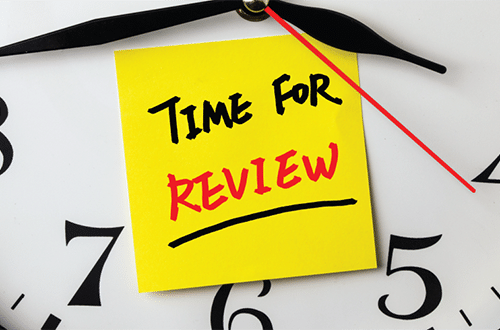SUPERANNUATION: is it time to review your investments?

A lot can happen between the time you start your first job and the time you retire. From building a career, buying a home and raising a family to dealing with setbacks such as redundancy or divorce, life doesn’t stand still and neither should your investments.
In all likelihood, the investment choice you made at age 25 may no longer be appropriate at age 45 or 55. Or you may not have made an active choice, opting for your fund’s default option instead.
In most cases, the default option is a ‘balanced’ portfolio of growth and conservative assets. The mix of investments is chosen by the fund manager to suit the average fund member who might be anywhere from 18 to 65 years of age.
The problem with this approach is that we all have a slightly different appetite for risk and different financial circumstances. What’s more, these things are not set in stone but can and do change as you progress through life.
Check the menu
To make sure your super suits your current needs, start by checking how your money is invested and then compare this with what else is on the fund’s menu.
All super funds have a range of investment options for you to choose from. These vary according to the kinds of assets they hold. Your choice will depend on the amount of risk you are willing to take and the return you can expect to make in the long run.
Most funds these days offer an a la carte menu of single asset options such as Australian shares, international shares, sustainable shares, property and fixed interest, which you can mix and match to suit.
Alternatively, you can choose from a selection of ready-mixed options to suit different risk profiles. Different funds use different labels, but according to ASIC’s MoneySmart website there are four broad categories [1]:
Growth options typically hold around 85% of their funds in shares and property with the balance in cash and fixed-interest investments. High growth options can have up to 100% in shares and property. Average returns are higher over the long term – typically several percentage points above inflation – but the ride may be bumpier along the way. Losses tend to be higher in bad years and you can expect a loss in four or five years out of every twenty.
Conservative options have around 70% in low growth, low risk cash and fixed interest with the balance in shares and property. Average returns are lower than growth options over time but there is less risk of loss in any year.
Cash invests in short-term deposits with Australian institutions which offer relatively low, stable returns and no risk of loss. The risk is that returns won’t keep pace with inflation.
Balanced or default, option may hold anywhere between 60 and 75% of its investments in shares and property with the rest in cash, bonds and fixed interest. Average returns over the long run will be a little less than the growth option but higher than conservative and cash options.
The balanced option is designed to suit most of the people most of the time, with above average returns for below average risk. But there are other ways to manage risk while maximising returns over the course of your life.
A matter of time
The thing to remember about risk in investment, as in life, is that time often heals all wounds. If you have 20 or 30 years left to work and save, you may consider taking a little more risk than someone with less than 10 years till retirement. That’s because you have more time to recover from the swings and roundabouts of global investment markets.
Time can also eat away at your savings if you invest too conservatively. That’s because inflation reduces the buying power of money over time. So, those with at least 10 years to retirement may consider keeping a substantial portion of their retirement savings in a growth or balanced option.
The argument for reducing your investment risk grows stronger as you near retirement and have less time to recover from a market downturn. Even so, people entering retirement nowadays may still have up to 30 years to plan for. Depending on your appetite for risk, it may be appropriate to keep some money in growth assets to avoid depleting your capital too quickly.
Just because super is a long-term investment, it doesn’t mean it should be filed away in a drawer until you retire. Given that many of tomorrow’s retirees can look forward to living well into their 90s, the reward for taking an active interest in your super is that your savings are more likely to last the distance.
If you have further queries about superannuation, speak to your Highview expert today:
Cranbourne: 03 5990 1000
Prahran: 03 9529 1566
Mornington: 03 5911 2100
Ringwood: 03 8899 9797
[1] Super investment options, MoneySmart, www.moneysmart.gov.au/superannuationand-retirement/how-super-works/super-investment-options
Source: Written by Colonial First State Investments Limited, InterPrac Financial Planning Quarterly Insight Spring 2018 Newsletter